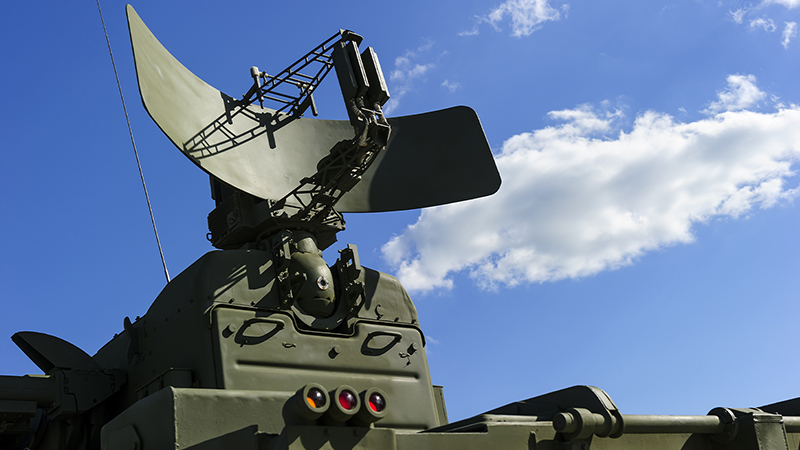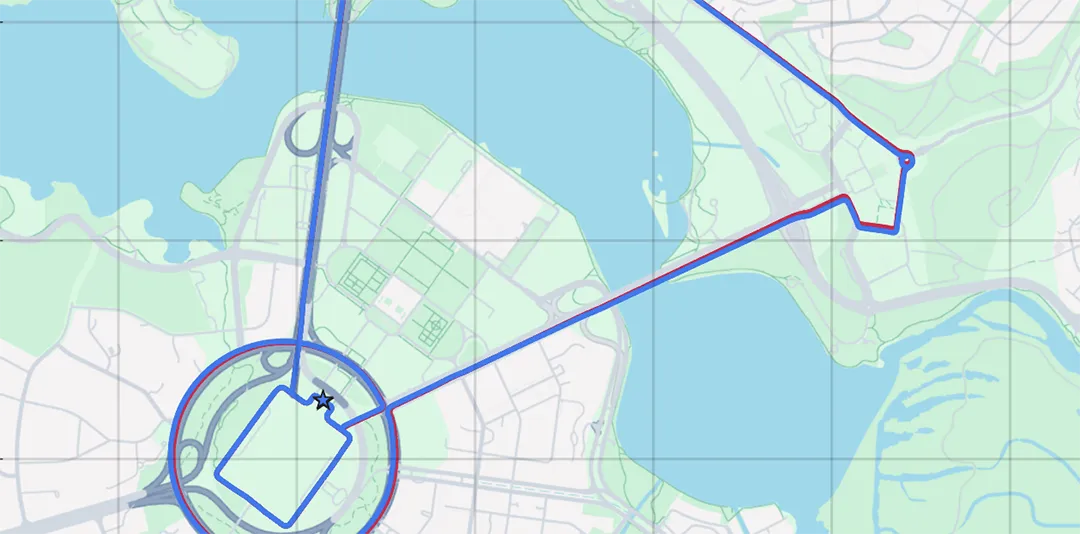Tech Article


Published on:
Mobile radar systems used for defense operations are trending towards the adoption of Assured Position, Navigation and Timing (APNT) solutions, such as an inertial navigation system (INS), for maintaining precise and accurate positioning. This is driven by the rise of geopolitical conflicts, which have exposed the vulnerability of Global Navigation Satellite Systems (GNSS) to electronic warfare.
Notably, vehicle-mounted mobile radar systems operate in dynamic environments, and are constantly moving and changing orientation. Where GNSS signals are disrupted or unavailable, an INS ensures these systems have continuous and precise heading data, enabling reliable tracking accuracy.
Radar stands for Radio Detection and Ranging. It uses radio waves to determine the distance, velocity and often the physical nature of objects in its vicinity. There are two main types of radar systems:
360-degree radar: Also known as imaging radar, this type continuously rotates to scan its entire surroundings, providing comprehensive data on the range and density of detected objects. However, its need to complete a full 360-degree rotation may result in delays in detecting fast-moving targets until the radar returns to the same position.

360-degree radar
Static radar: Unlike 360-degree radar, static radar maintains a fixed field of view and does not rotate. To achieve a full surveillance coverage similar to that of a 360-degree radar, multiple static radars are typically arranged within an array. These setups provide full coverage in different directions without the need for any single unit to rotate.
Both types of radars have their unique advantages and both can be mounted on vehicles to form a mobile radar system. This allows for rapid deployment and repositioning, which helps keep their location hidden when they are not active. It also helps to maintain a tracking lock on targets by moving to a more ideal location.
For both types of radars, such mobility demands advanced navigation and stabilization technologies, namely INS. An INS tracks the position, orientation and velocity of moving objects using motion sensors such as accelerometers and gyroscopes. It can operate independently of external references like GNSS. This makes it exceptionally reliable in scenarios where GNSS signals are compromised by jamming, spoofing or multipath errors.

Mobile radar system
Mobile radar systems are indispensable in defense, providing critical capabilities such as battlefield surveillance, target tracking, asset guidance and threat detection. However, in hostile environments where GNSS is degraded, these systems would be unable to operate without a robust, accurate INS to control the radar’s orientation and maintain correct alignment.
As offensive drone threats grow, mobile radars are increasingly being used in counter-drone systems to provide fast and accurate drone detection and tracking. This capability is needed in order to deploy effective countermeasures to protect personnel, infrastructure and critical assets.
Integrating a mobile radar system with an INS involves precise calculations and calibrations. One key process is determining the heading through the gyrocompassing capability of a high-performance FOG-based INS (fiber-optic gyroscope). This involves a two-step process:
The first step, coarse alignment, allows the gyrocompass to estimate true north within about two minutes. This step is then followed by fine alignment, where the system refines the heading accuracy to as precise as 0.01 degrees (depending on latitude), typically taking about ten minutes. Both the rapid determination of North and the precision of these alignments are crucial in defense scenarios.
In most modern mobile radar setups, the INS is mounted directly onto the vehicle frame, known as a strap-down INS. In this setup, the INS can continuously monitor the vehicle’s position and orientation, providing real-time data to the radar to maintain pointing accuracy. Without these updates, any changes in position or orientation could significantly compromise the accuracy of target tracking and the overall reliability of the radar system.
Further improvements can be made by incorporating an additional INS within the radar assembly and connecting it to the stabilization system. This setup typically involves a gimbal to ensure the radar’s reference frame remains stable despite vehicle movements. This allows the control system to more precisely control the radar, further improving overall performance in diverse operating conditions.
To understand the impact of INS accuracy on mobile radar operations, consider two scenarios, each involving a mobile radar system on an armored unit navigating a mountainous region to scout for enemy drones. As the vehicle moves over the rugged terrain, it will be subject to vibration and shifts in orientation, introducing azimuth and inclination errors into the radar system, affecting its pointing angles.
In the first scenario, the armored unit has an unreliable INS, which struggles to accurately recalibrate for the radar’s heading and orientation caused by the vehicle’s movement. Without effective correction, these azimuth and inclination errors accumulate, leading to poor tracking. As a result, the radar displays false readings, showing “ghost” drone locations where drones appear in incorrect positions. In some cases, the drone may not be detected at all.
Consequently, any countermeasures initiated based on these inaccurate readings could fail to locate the actual target, while also revealing the radar’s location.
In the second scenario, the armored unit is equipped with a high-performance INS, capable of quickly recalibrating the radar’s changing heading and orientation as the vehicle moves through challenging terrain. The INS maintains true north accuracy, minimizes azimuth and inclination errors, ensuring the precise tracking and display of drone positions. This then allows operators to effectively coordinate successful countermeasures.
These two hypothetical scenarios highlight the importance of an advanced, high-quality INS for defense operations.
The primary advantage of integrating an INS into mobile radar systems is its ability to provide accurate position and orientation data. This is especially valuable in GNSS-degraded areas or in densely populated urban areas prone to multipath errors. However, the benefits of INS extend beyond this:
Real-time data – An INS allows mobile radar systems to deliver near-instantaneous updates on the position, velocity and orientation of incoming and nearby objects. This is vital for tactical decision-making, especially in scenarios where swift deployment of countermeasures can be the difference between success or failure. Whether mounted on fixed assets, vehicles or ships, the speed at which radars can detect threats is crucial.
Superior radar stablization – While strap-down INS units perform reliably, integrating a gimballed INS into radar systems brings an additional advantage – superior stabilization. Equipped with high-performance gyroscopes, a gimballed INS excels at maintaining precise radar pointing in dynamic environments, ensuring both accurate and effective target tracking.
Countering electronic warfare – As electronic warfare technologies proliferate, the integration of a high-performance INS into mobile radar systems becomes increasingly important. When GNSS spoofing and jamming occurs, an INS can maintain accurate vehicle positioning and radar orientation, safeguarding its operational effectiveness.
Advanced Navigation’s software-enhanced systems offer the flexibility, precision, and resilience required for strategic-grade applications. Every solution can be updated or modified to address new threats, environments, or mission requirements without requiring a redesign.
Advanced algorithms also can extend product lifecycles, reduce costs, and ensure interoperability across platforms. This enables full autonomy, enhances situational awareness, and simplifies compliance with evolving defense standards.
In conclusion, integrating high-performance INS solutions into mobile radar systems is essential for modern defense operations where APNT is needed. With superior stabilization, real-time updates and resilience against electronic interference, INS ensures radars have the data they need for precise pointing, target tracking and effective countermeasures.

20 May 2025
Go to Article
30 March 2025
Go to Article